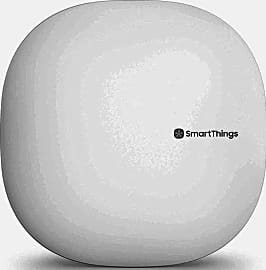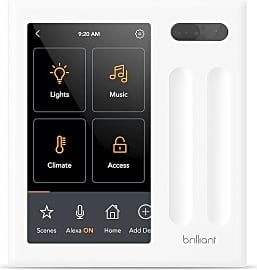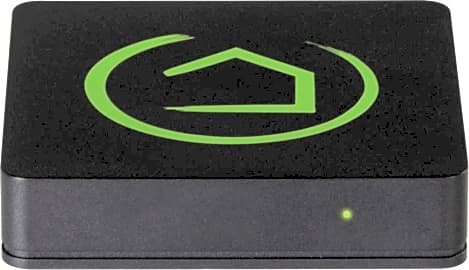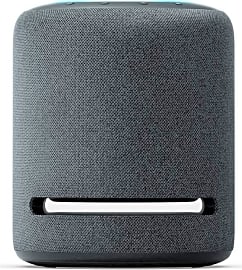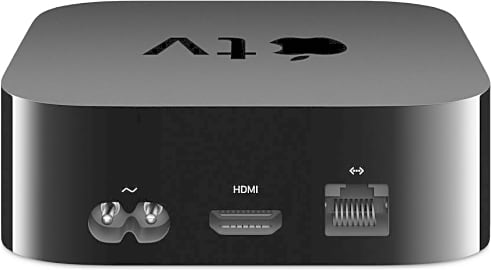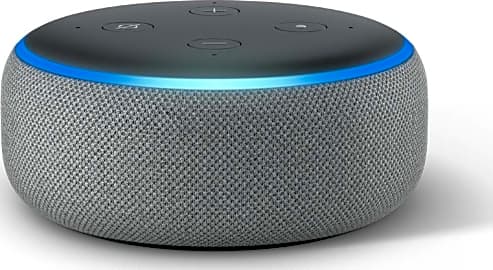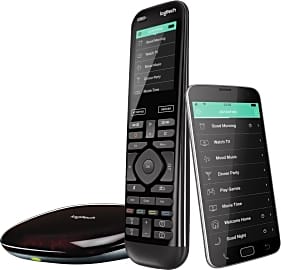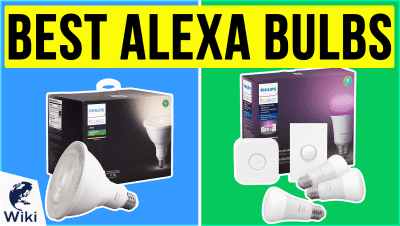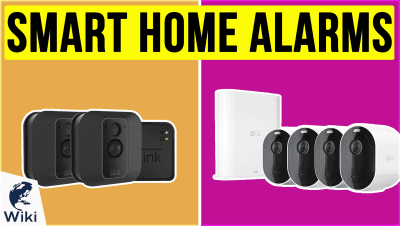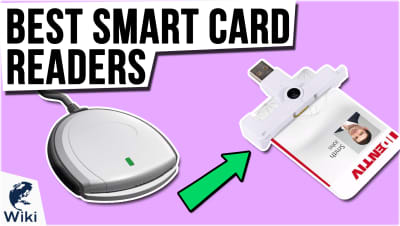The 9 Best Smart Home Hubs

This wiki has been updated 32 times since it was first published in December of 2017. If you feel that you spend far too much time turning on appliances, switching off lights, and locking doors, technology has come to your rescue with smart home hubs, which can communicate with a wide variety of household devices. They'll let you do all sorts of clever stuff, including setting a thermostat, automating sprinklers in your garden, and monitoring your security system from anywhere. When users buy our independently chosen editorial selections, we may earn commissions to help fund the Wiki.
Editor's Notes
September 17, 2020:
One of the most exciting new additions to our ranking is undoubtedly the Amazon Echo Show 8, which boasts a large enough screen to accommodate video calls, and that makes a particularly nice addition to a kitchen, with weather information to start your day and an outstanding interface for reviewing recipes. The Google Nest Hub Max is a similar product, which you'll find in our special honors section, and one that has an available Netflix app that the Echo Show does not.
The next best thing among screen-based platforms is the Brilliant Control Panel, which would be an excellent choice for anyone without a lot of space to spare. It's designed to install in your wall where any other light switch might be, coming in sizes that can accommodate a variety of panel slots. It can work with dimmable lights and control a wide variety of appliances. Now, while some offerings have built-in speakers, the Amazon Echo Studio might be the best choice if you're just starting to build out your smart home and don't have a stereo system to hook up to it yet.
April 28, 2019:
After years of middling-quality devices, smart home setups are finally reaching a point where they're reliable and relatively easy to configure. One thing you'll notice, though, is that there are plenty of negative reviews for even the best products; the fact remains that while the field is more advanced than ever, there are still a lot of variables that contribute to whether or not a hub will work well or easily for each individual home. One of the most important factors is the configuration and reliability of your Wi-Fi network, particularly if that's your hub's primary means of communication. But if you're committed to thorough troubleshooting, you should be able to make most of these work.
The Philips Hue is one of the more focused options, as it primarily works with lighting products from its own brand and family. If you're trying to configure more complicated devices, it's not the one for you, but for programming lamps both indoors and out, it's a great choice. Similarly, the Echo Dot isn't technically a complete hub like most others, but if you're aim is to configure a multimedia setup or control appliances using voice commands while you're actually there in your home, it's a worthwhile and very affordable choice. Both Logitech models stand apart for their versatile physical remotes as well as their app controllers, and they're built with a focus on multimedia control. The Securifi is interesting because it's one of the few that reliably combines a router and a hub, though if you have a large number of users connected to your network, its wireless capabilities may not quite suffice.
Apple TV, for what it's worth, offers an excellent user interface, and the list of devices it works with is getting larger as we speak, though it's still not up to par with the top choices. Wink already does have vast compatibility, though it's far more expensive than most others we found. The Hubitat is a favorite among tech-savvy users; while all of these require patience and close attention, it takes a little bit more skill to configure than most, but if you manage to get it working, it can really pay off. When set up properly, it doesn't use the cloud, but operates entirely locally, thus eliminating one of the biggest variables in most smart home systems.
If you're looking for ease of use, the latest Echo Plus is almost impossible to beat. It's especially refined and works with a range of devices. Given its high level of popularity, it's not surprising that developers have rushed to ensure that their devices work with it. But whatever you do, don't forget about the Samsung SmartThings. It has consistently rated among the easiest to use, most reliable, and most widely compatible on the market. The third-generation model does nothing but improve upon this standing.
Special Honors
Google Nest Hub Max Whether you're making video calls or veal parmesan, this is a nice companion to have, as its impressive 10-inch display is touch sensitive and can show you content from a variety of useful apps like YouTube. It also boasts the ability to stream from Netflix, and its audio quality is superb thanks to a built-in woofer to provide a little extra bass. google.com
CIA: Centralized And Intelligent Automation
A built-in switch within the hub maintains the information necessary to determine exactly how and where data will be sent.
In an age of constantly-evolving technology, innovation and integration are buzz words that are often used to illustrate the benefits of making certain tasks easy and seamless for people as a result of automation. The ability to remotely control objects and functions through a central access point is something that is ideal for many people with highly-active lifestyles. For example, in addition to facilitating traditional audio communication, smartphones act as multifunctional hubs that connect to the web, stream music, and keep information accessible to their users at all times. They also have the ability to leverage apps to control and communicate with other devices. Likewise, homes now have the opportunity to benefit from "smart automation" using the convenience of a centralized platform to control many of their primary functions.
Also referred to as a smart home bridge, the smart home hub is a hardware device that allows for automatic control of certain features and domestic appliances. As an example, imagine that one of the bedrooms in your home has several smart light bulbs installed, each from a different manufacturer. Rather than having to go into that bedroom and manually turn on each bulb one at a time, the smart home hub makes it possible to switch all of those bulbs on or off remotely and at the same time, depending on your programming preferences. This automation can be can be accomplished without too much concern for the different communication protocols used by these bulbs getting in the way of their operation. What does this mean in simple terms? The smart home hub gets your technology working together by acting as a communication translator between several devices. But how does this work exactly?
Think of the hub as the brains of a smart home network. It is responsible for simplifying the process of programming, accessing, and monitoring the devices to which it communicates and carrying out the commands necessary for them to do their jobs at the right time and under the right conditions. A built-in switch within the hub maintains the information necessary to determine exactly how and where data will be sent. A smart home app that comes with the device acts as a universal remote that allows you to automate, schedule, and control various tasks. These include managing switches and outlets, controlling thermostats, and programming smart door locks, motion sensors, and even garage door openers to activate when certain conditions have been met. For example, a hub can be programmed to turn your lights on and unlock doors when your mobile device comes within a certain distance from your house.
Choosing A Smart Home Hub
We mentioned earlier that the smart home hub acts as a translator for interpreting different communication protocols. That said, always consider a device that works with as many of these protocols as possible. That way, you won't be limited to specific types of smart devices. Many hubs connect to a smart home network and communicate with devices through any one of several common protocols, including Wi-Fi, Bluetooth, Zigbee, and Z-Wave, each with its own benefits and potential drawbacks.
That way, you won't be limited to specific types of smart devices.
For example, while the high-bandwidth Wi-Fi protocol is common and offers a wide range of compatibility with many devices, keep in mind that it also uses quite a bit of power. That said, make sure a Wi-Fi hub is connected to a constant power supply to minimize its dependence on batteries. Using adaptive frequency hopping and encryption, Bluetooth communication offers both security and flexibility in the types of commands it sends and receives, while the Zigbee and Z-Wave protocols consume little power and utilize mesh networks to extend the overall range of your smart home network. However, the Zigbee and Z-Wave protocols are typically more limited than Wi-Fi or Bluetooth when it comes to the commands they can send and receive. The moral of the story here is to find as versatile a hub as possible, so that any shortcomings for a particular communication protocol won't have a dramatic effect on a hub's ability to manage the smart devices throughout your home.
Another big consideration for a smart home hub is voice control. Built-in voice command functionality is especially useful for elderly homeowners who may need some additional assistance in performing tasks like turning on lights, setting timers, or locking doors without having to move around very much.
Depending on the number of smart devices you have in your home, pay attention to a hub's maximum level of integration. Some hubs can connect to as many as 15 devices simultaneously. The hub you choose should also be compatible with both the iOS and Android operating systems, making it easy to access with most mobile smartphones.
A Brief History Of Smart Home Automation
The earliest form of home automation dates back to the early 1900s with the introduction of the first gas and electric-powered home appliances like the washing machine, water heater, and refrigerator, objects designed to eliminate some forms of manual labor.
By 2012, nearly 1.5 million households in the United States were using some type of home automation.
Westinghouse engineer James Sutherland developed the first home computer in 1966 called the Electronic Computing Home Operator (or Echo IV), which could compile shopping lists, control a home's temperature, and even turn certain appliances on or off.
The first home network automation technology was developed in 1975 and was called the X10 system. Using domestic power lines, X10 could help foster communication between a home's appliances, but it was also susceptible to electronic interference.
By the 1990s, the concept of smart home automation entered popular culture, but it would take a bit longer for the technology to be adopted into practical application. By 2012, nearly 1.5 million households in the United States were using some type of home automation.
The first dedicated smart home hub called SmartThings was launched in 2012 as part of a Kickstarter campaign and was later acquired by Samsung in 2014. Today's smart home hubs are all about integration, mobile control, and compatibility with many different communication protocols.


